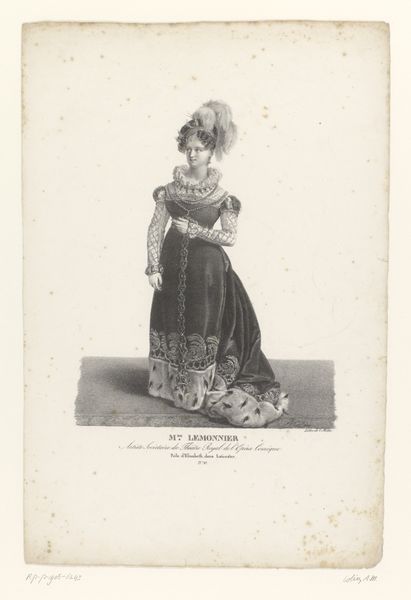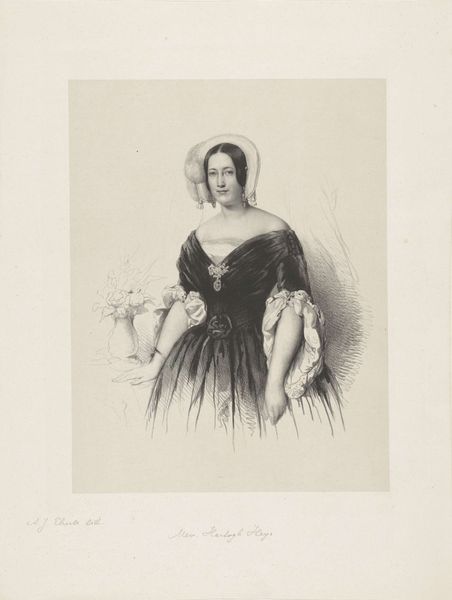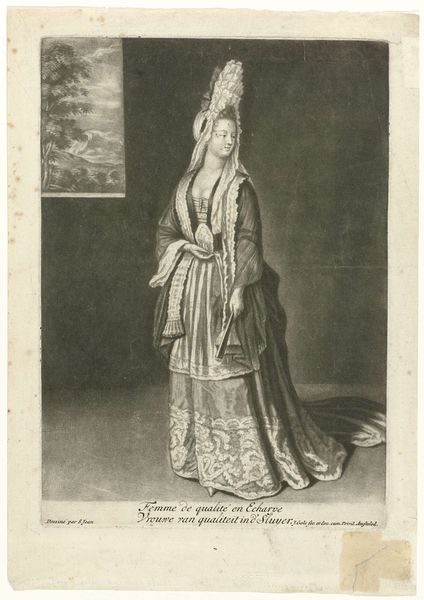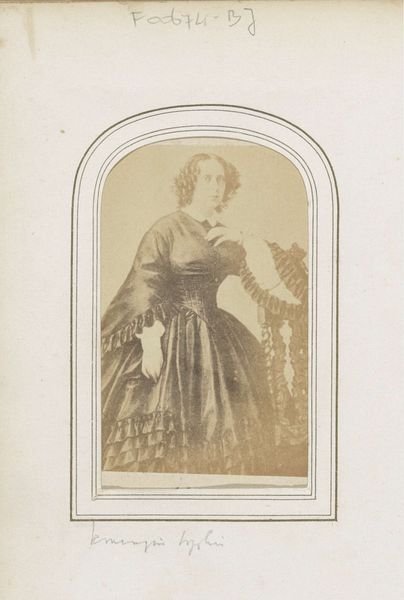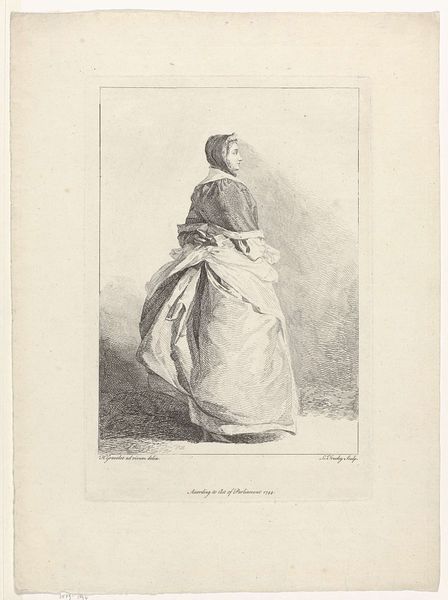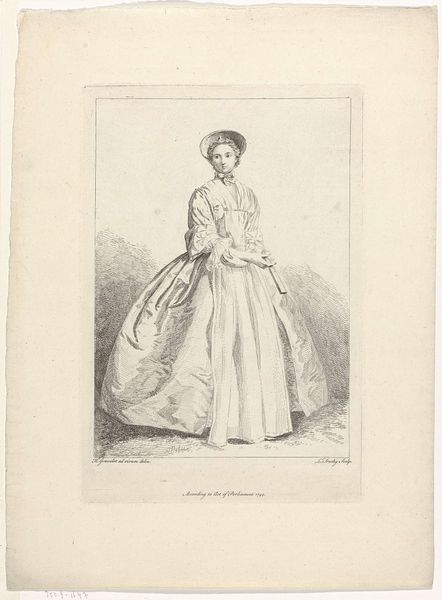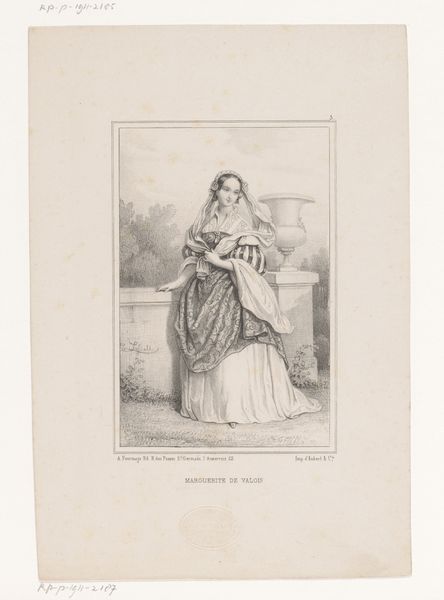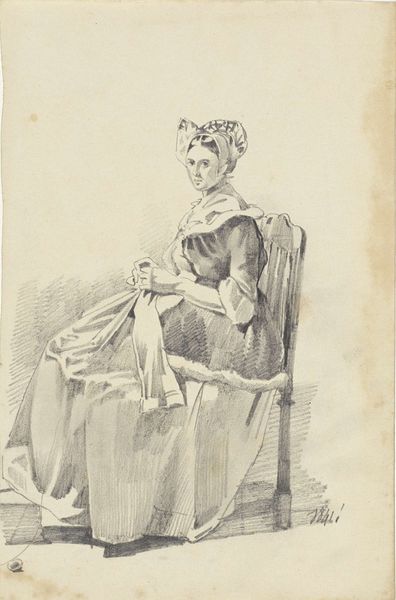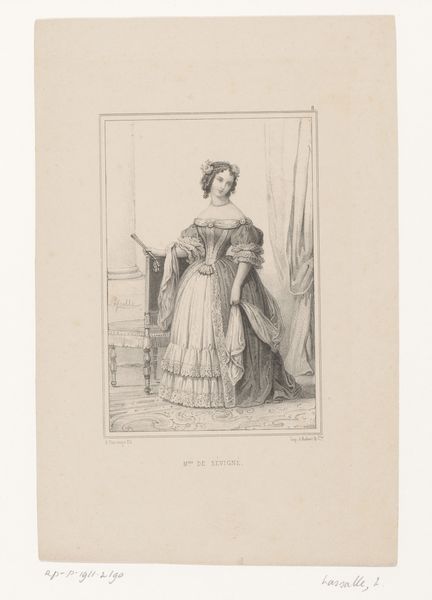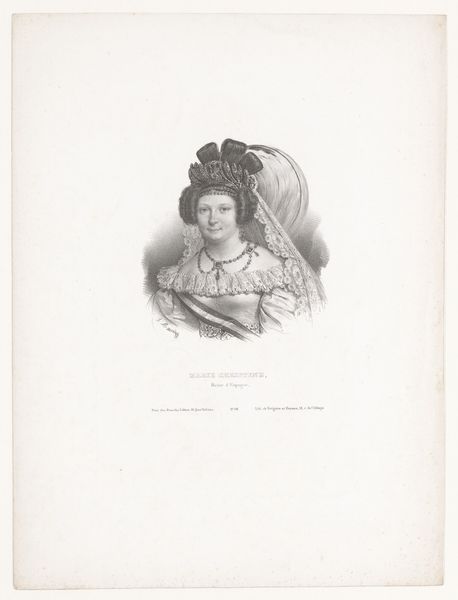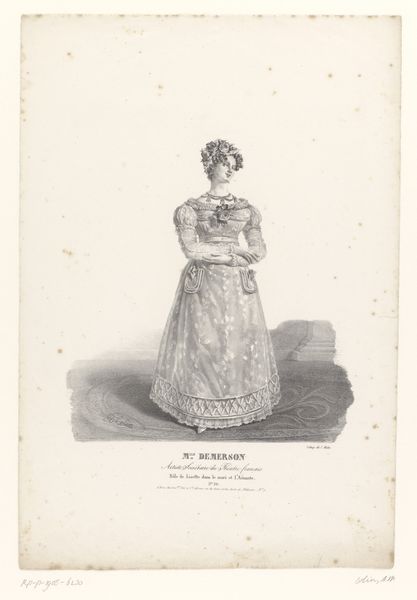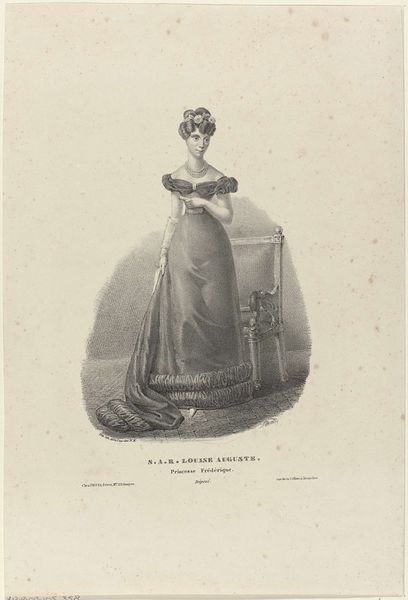
print, engraving
#
neoclacissism
# print
#
historical photography
#
19th century
#
history-painting
#
engraving
Dimensions: height 323 mm, width 237 mm
Copyright: Rijks Museum: Open Domain
Curator: Here we have Claudio Linati's "Portret van Wilhelmina van Pruisen," an engraving dating roughly between 1815 and 1829. What are your initial thoughts? Editor: A certain somberness, despite the regal subject. It’s formal, obviously, but the grey tones convey a sense of constraint and, perhaps, a touch of melancholy. Curator: Indeed. The composition adheres to a classical structure. We see Wilhelmina centered, almost architecturally placed in the picture plane. Consider the balance created by her pose, with a table holding the crown positioned slightly to the left, yet offsetting the sweep of her gown to the right. Note, too, the use of chiaroscuro to define form and lend depth to the portrait. Editor: But it’s also about power, isn’t it? Wilhelmina’s marriage to Prince William I was strategic, solidifying Orange family rule. This image reinforces her position, and yet I find myself wondering about the restrictions placed upon her. Did she choose this dress, this pose, or was she directed? The very act of being portrayed then carries layers of societal pressure and performativity. Curator: You raise a critical point about agency, or the perceived lack thereof. But the artistry is undeniable. Observe the fine hatching and cross-hatching techniques used to create subtle tonal variations, rendering the textures of her gown, fur stole, and lace cap with considerable skill. Linati masterfully transforms simple lines into palpable surfaces. Editor: Of course. Linati’s talent is clear. However, understanding his artistic skill does not preclude understanding the social forces at work during that time. The neo-classical style itself was intrinsically linked with ideas about nation-building and legitimate power, wasn't it? The style was frequently borrowed to signal legitimacy. So her pose isn't just aesthetically pleasing. It speaks volumes about 19th-century constructions of royal femininity and leadership. Curator: That’s certainly a valid interpretation. What strikes me, ultimately, is Linati’s technical finesse, turning an ostensibly simple portrait into a highly sophisticated study of light and shadow, line, and form. Editor: And I see it as an interesting document of how rulers presented themselves, strategically navigating complex political landscapes through image, dress, and posture. An image of Wilhelmina trapped by circumstance.
Comments
No comments
Be the first to comment and join the conversation on the ultimate creative platform.

